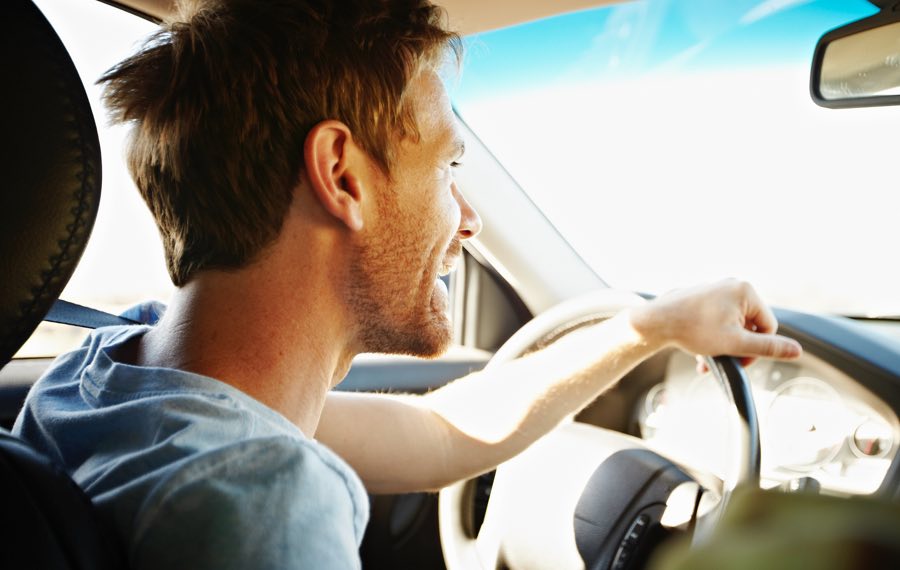A Simple Guide to ANCAP Car Safety Ratings

Francis Taylor
Last Updated: 19th October 2022
If you’re buying a new car and you’re a little preoccupied with the style, it’s important not to forget about its substance. And by substance, we mean the elements hidden away in the nooks and crannies of the car that keep you safe every day on the road.
We’re here to help you make a more informed decision when it comes to finding a safe car in your budget, and to do that, we need to consider Australian vehicle safety ratings. Read on for more detail about Australia’s independent vehicle safety authority, The Australasian New Car Assessment Program (ANCAP).
What is ANCAP?
ANCAP is the leading authority on vehicle safety in Australasia1. The organisation works closely with public and private organisations to advocate for improved vehicle safety design and specification.
Although independent, the Australian Government explicitly supports ANCAP in its initiative to help drivers find safer vehicles2.
ANCAP achieves this through a series of safety ratings from zero to five stars. These are then used to assess the cars available across a range of new passenger, sports utility vehicles (SUVs), and light commercial vehicles (LCVs). The safety ratings encompass both the ability of a vehicle to protect its occupants as well as pedestrians in the event of a crash. The closer a vehicle’s rating is to five stars, the better equipped it is to avoid or minimise the effects of a crash.
A five-star rating means that the car has not only achieved the highest possible standards in all safety tests, but it also features the latest safety technologies3.
The ANCAP safety rating system
ANCAP vehicle safety ratings are based on four main areas:
- 1. Adult occupant protection – This is a benchmark to measure the level of protection an adult passenger would have in the front or back seats in the event of a crash.
- 2. Child occupant protection – This measures how well-equipped the car is to fit child-restraints in the back seats, as well as how well protected children are in restrained seats.
- 3. Vulnerable road user protection – The front of the car is also assessed to see how well it minimises risk to a pedestrian or cyclist that is struck in the event of a collision.
- 4. Safety assist technologies – Cars are also assessed for the effectiveness of any fitted safety assist technologies in the event of a crash and in how well they minimise the risk of a collision occurring.
The latest road safety findings from the Bureau of Infrastructure and Transport Research Economics (BITRE) show that in the last 12 months (ending in March 2021), there were 1,127 deaths on Australian roads. And the latest data for a 12-month period of road crash injury hospitalisations (ending in June 2018), 39,404 people were admitted to hospital4.
ANCAP takes this information into account when assessing vehicles for road safety, and it’s also why they recommend buying newer cars; a higher safety rating that’s as recent as possible is the best protection for you and other road users.
Not buying a brand new car?
If you’re buying a secondhand or used car, then it’s also worth looking at the Used Car Safety Ratings (UCSR).
Specifically, the UCSR looks at how likely someone will be killed or seriously injured in an accident depending on the vehicle they’re driving. On this point, Assistant Professor Stuart Newstead of the Monash University Accident Research Centre notes that someone driving the worst rated vehicle is eight times more likely to be killed or seriously injured in a crash than that same driver in the safest vehicle5.
The UCSR also bases its five-star system on real-world crash statistics and police reports. And like the ANCAP, its mission to inform and protect consumers is welcomed by the Australian government1.
Just keep in mind that the UCSR does not assess new or near-new cars – typically those manufactured in the last three years or so. In such cases, ANCAP is a more suitable reference.
What these ratings tell us
As noted in the UCSR 2021 brochure, newer vehicles tend to be safer. This is reflected in the rating system, where cars with a model year more than a decade old typically score lower5.
This is because newer cars have to comply with more regulatory standards and usually come with the latest safety features.
Of course, this does not mean that all newer cars are necessarily safer. There can be exceptions. For instance, back in 2021 ANCAP tested the 2020 make of the Mitsubishi Express and rated it zero stars6.
What it does mean is that you should proceed with care if you decide to purchase an older car. Checking the car’s UCSR rating online may be a good place to start if you’re looking to make an informed decision.
Where can I find my car’s safety rating?
If you’re looking to buy a new or second hand car, you might wish to use one of the car safety rating resources below:
- Victoria’s Transport Assessment Commission – ‘How safe is your car’
- Queensland’s Department of Transport and Main Roads – ‘SafeCars’
- The ANCAP website and online search engine
- The 2021 USCR brochure (via the New South Wales Department of Transport)
- The Victorian Safety Research Group’s UCSR Buyer’s Guide (2019-2020)
And if you’re still in doubt, contact your local motoring authority or get in touch with a trusted mechanic for more guidance. Failing that, everyone knows at least one person that lives and breathes cars. Have a chat with them too, but perhaps steer clear of any rev-heads for this one.
Don’t forget car insurance
There’s no substitute for good safety, but even the best driver in the safest car might get into a crash. The roads – and other drivers – are unpredictable.
This is where car insurance might be helpful. Depending on the cover you choose, a policy can cover the damage done to your car as well as the damage inflicted on the other driver’s.
Comparing different car insurance policies might also help you find a suitable policy at a competitive price. At iSelect, you can also compare different policies from a range of providers – making it easier to weigh up the different cover types and premiums.
2 Source:https://www.roadsafety.gov.au/action-plan/2018-2020/vehicle_safety
3 Source:https://www.ancap.com.au/safety-ratings-explained
4 Source:https://www.bitre.gov.au/statistics/safety
5 Source:https://www.monash.edu/__data/assets/pdf_file/0006/2697054/2021-Used-Car-Safety-Ratings.pdf
6 Source:https://www.ancap.com.au/safety-ratings/mitsubishi/express/ce625a
Francis Taylor
Content Writer

iSelect General Pty Limited ABN 90 131 798 126, AFS Licence Number: 334115. Any advice provided by iSelect is of a general nature and does not take into account your objectives, financial situation or needs. You need to consider the appropriateness of any information or general advice iSelect gives you, having regard to your personal situation, before acting on iSelect’s advice or purchasing any policy. You should consider iSelect's Financial Services Guide which provides information about our services and your rights as a client of iSelect. iSelect receives commission for each policy sold.

